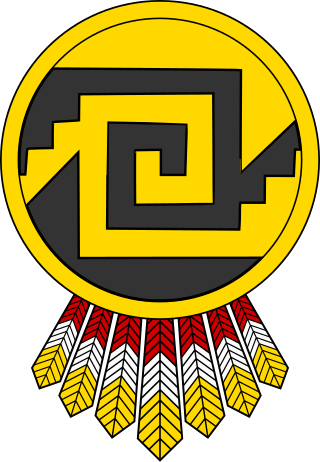Chīmalli
Shield used by Aztec warriors From Wikipedia, the free encyclopedia
The Chīmalli or Aztec shield (Nahuatl pronunciation: [t͡ʃiːˈmalːi] ⓘ; "shield") was the traditional defensive armament of the indigenous states of Mesoamerica. These shields varied in design and purpose. The Chīmalli was also used while wearing special headgear.




Construction
Chīmalli were constructed out of materials such as the skins of deer, ocelots, and rabbits, plants such as bamboo, agave, and cotton, precious metals such as gold, and feathers from local, remote, and migratory birds. A single shield could be covered with as many as 26,400 feathers.[1]
Feathers for chīmalli were collected by bird breeders called amantecas, who hunted and raised several species of birds for the purpose of using their feathers for art. Being an amanteca was a family tradition, and one would teach the art to their progeny. The creation of chīmalli was also a community tradition, an art that involved amantecas, as well as goldsmiths, carpenters, and painters.[1]
Variations
The size of the shields varied. Some had normal (circular design) dimensions, others covered the whole body. There are reports of versions that could be folded. There were also ceremonial shields called "māhuizzoh chīmalli" (Nahuatl pronunciation: [ˈmaːwisːoo̥ t͡ʃiːˈmalːi]?).[2]
See also
References
Literature
Wikiwand - on
Seamless Wikipedia browsing. On steroids.
